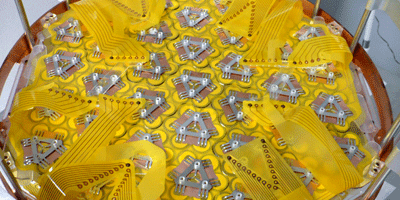Counting Down to Zero Neutrinos
Are neutrinos their own antiparticles? Clear proof would come from observing a neutrinoless double-beta decay—the simultaneous transmutation of two neutrons into two protons, without the emission of neutrinos. Looking for such events, which have never been seen before, is a primary goal of experiments at the newly commissioned Enriched Xenon Observatory (EXO).
Xenon- is a nominally stable isotope, but it is predicted to undergo double-beta decay with the emission of two neutrinos. The lifetime of this “normal” double-beta decay, which occurs by a different process than the neutrinoless decay, is a rare event that has so far only been estimated for xenon. Measuring it would help theorists confirm they understand the initial and final states of the two-neutrino process, which are the same as those involved in the neutrinoless decay.
In a paper appearing in Physical Review Letters, the EXO collaboration, which includes scientists from around the world, reports the first measurement of the two-neutrino double-beta decay for xenon- . The team used the EXO- , a prototype experiment located at the Waste Isolation Pilot Plant (WIPP) near Carlsbad, New Mexico, which contains kilograms of liquid xenon enriched with xenon- .
The team finds a half-life for the decay of years. With this important input now in hand, theorists and experimentalists working at EXO are getting closer to understanding the fundamental nature of neutrinos. – Abhishek Agarwal





